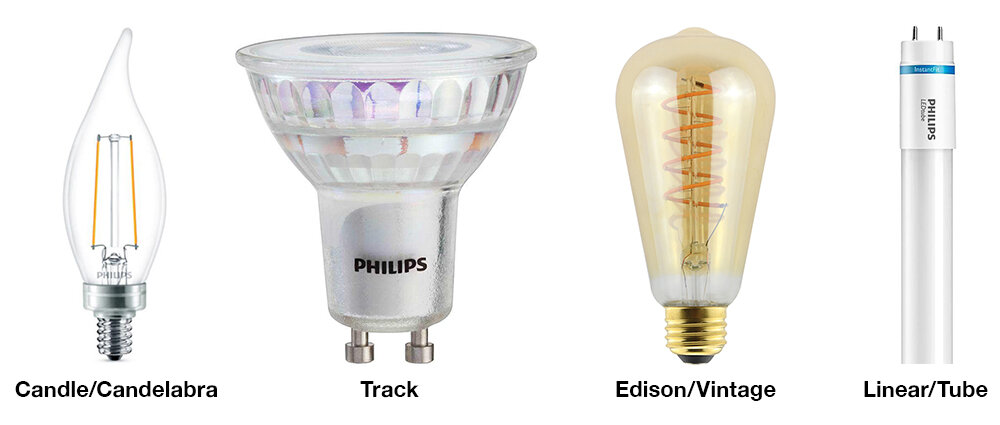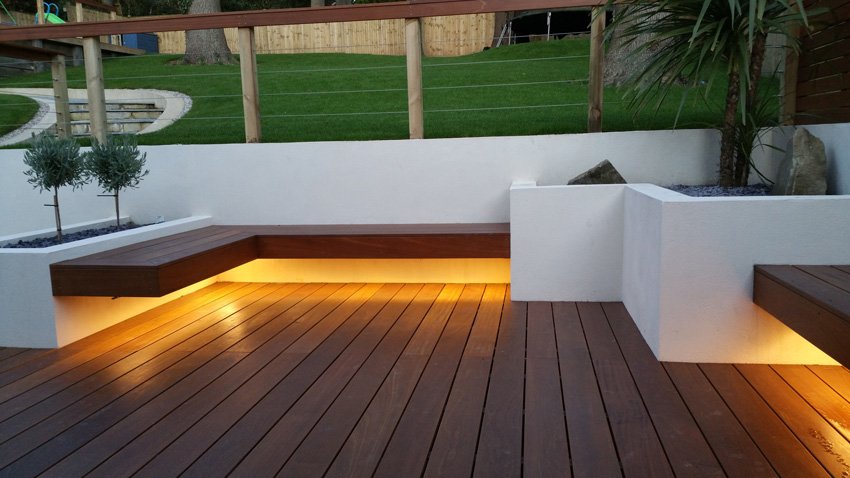LEDs – A Quick Summery
By: Jonathan Kremer
What is an LED?
LED stands for “Light Emitting Diode”. They are made out of a material called “semiconductors”. Simply put, a semiconductor is a material that has an electrical conductivity value falling between that of a conductor (such as copper, gold, steel …etc.), and an insulator (such as rubber, glass, air …etc.).
A diode is the simplest sort of semiconductor. It’s a two-terminal electronic component that works like an electrical valve, letting the current flow only in one direction.
A light-emitting diode is a type of diode that emits, or gives off, visible light.

So how does this “Light Emitting Diode” produce light?
Light is a form of energy made of particles called “photons”. Photons are released as a result of moving electrons.
For example, an incandescent light bulb produces light by passing electricity through a filament. The electrical resistance of the filament causes it to get so hot that it glows, producing the light. This is called a thermal emission of photons.
Unlike an incandescent light bulb, an LED bulb produces light by passing the electric current through a semiconducting material (the diode) which then emits photons through the principle of electroluminescence. An LED emits light when electricity flows through in one direction, from the Anode (positive side) to the Cathode (negative side). Being that it doesn’t rely on heat to produce its light, it runs much cooler and is much more energy-efficient than an incandescent light bulb. LEDs come in various sizes, colors, voltages, brightness, and formats. They have low energy consumption, impact resistant, and long-life span.
Various shapes, colors, format, and sizes
LED bulbs comes in many shapes and sizes. They are replacing screw-in incandescent bulbs, as well as halogen bulbs (tubes, pin, and bayonet), and even fluorescent tubes. For regular lighting, you can buy LEDs that give off a warm yellowish light (2700°- 3000°), neutral light (4000°), or cool white (6000°). You can also buy them in an assortment of decretive colors for various applications.


Brightness and Life Span
Most people are used to the days when we rated the amount of light that a bulb produced by using the term “watts”. We knew how much light the 60W incandescent bulb was able to give us, and rated everything else against that. Well, a watt is actually a unit of power, not light. Light is measured by “lumens”. LEDs produce much more lumens per watt than incandescent light bulbs. An 60W incandescent bulbs usually produces around 800 lumens of light. A 7W-10W LED will give the same number of lumens. This makes the LED much more energy efficient. Most bulbs and light fixtures list the number of lumens on the packaging.
The life span of an LED bulb is somewhere between 25,000 hrs. and 50,000 hrs. (depending on type and quality). Compared to incandescent (around 1,000 hrs.) and fluorescent (around 7,000 – 10,000 hrs.) bulbs, LEDs have a long-life span. Unless there is an electrical short, surge, or other type of malfunction, LEDs will usually start getting dimmer before they fail. This warning gives you time to find a replacement before they stop working completely.
How are LEDs powered?
LEDs are designed to run on low voltage (most common voltages range between 12-24V), direct-current (DC) electricity. Being that most places have higher voltage using alternating current (AC) between 110V – 250V, an “LED driver” is used to power the LEDs. A driver changes the higher voltage (AC), to low-voltage (DC), and therefore supplies the regulated current and voltage needed to power the LEDs. These drivers can be built-in the light fixtures themselves or installed separately. For instance, the screw-in LED bulbs have the driver built into its base.
Most LEDs are not dimmable. Some can be dimmed, but it’s not an easy task, nor is it always practical. One needs to have access to the driver, which is not always possible. Then the driver needs to be replaced with a special LED dimming driver.



Disadvantages of LED bulbs
There are a few small disadvantages of the LED bulbs.
- They are heat sensitive. If they are exposed to heat for an extended period of time, their expected lifespan shortens. As technology advances, this will be less of a problem.
- Usually not dimmable, especially without special dimmers.
- Higher initial cost than a regular incandescent bulb. Although this may be true, the prices are coming down all the time. Also, LEDs can come out cheaper to use when you consider long-term usage.
Conclusion
These days it’s hard to find light fixtures and bulbs other than LEDs – and with good reason.
LEDs are long lasting – up to 50,000 hrs.
LEDS can be dimmed if one really needs to.
LEDs are safer than other bulbs, and don’t contain mercury as CFLs or fluorescent bulbs do.
LEDs are energy efficient and lose much less energy in the form of heat than incandescent bulbs. LEDs are resistant to shock and vibration. There is no glass or filament to break.
